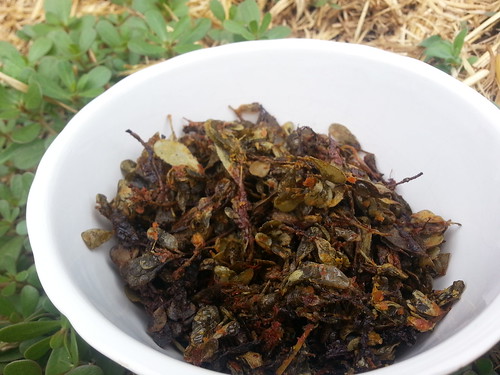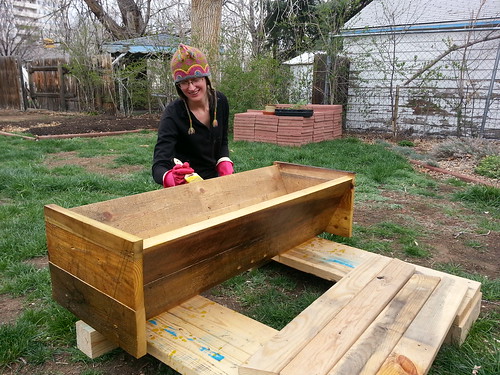
Faced with a large amount of volunteer purslane in the garden, I decided to make purslane chips using our kale chips recipe.
For me, the biggest barrier to using more wildcrafted weeds in my diet is that often they are more difficult to harvest. Lambsquarter, for example, requires the leaves to be removed individually (at least in my experience).
With this batch of purslane, which I often leave in place as a living mulch around my annual vegetables, I just harvested with a scissors (like lettuce) leaving the roots in place. This is nice because if the roots are pulled, dirt comes with.
I'll definitely be making this again since the purslane is so abundant.





